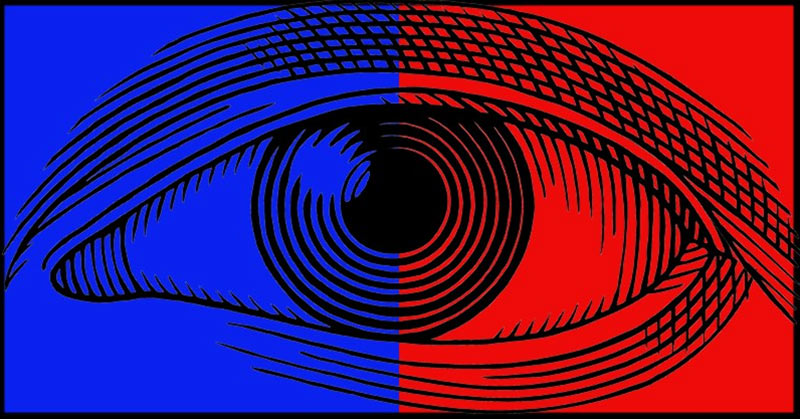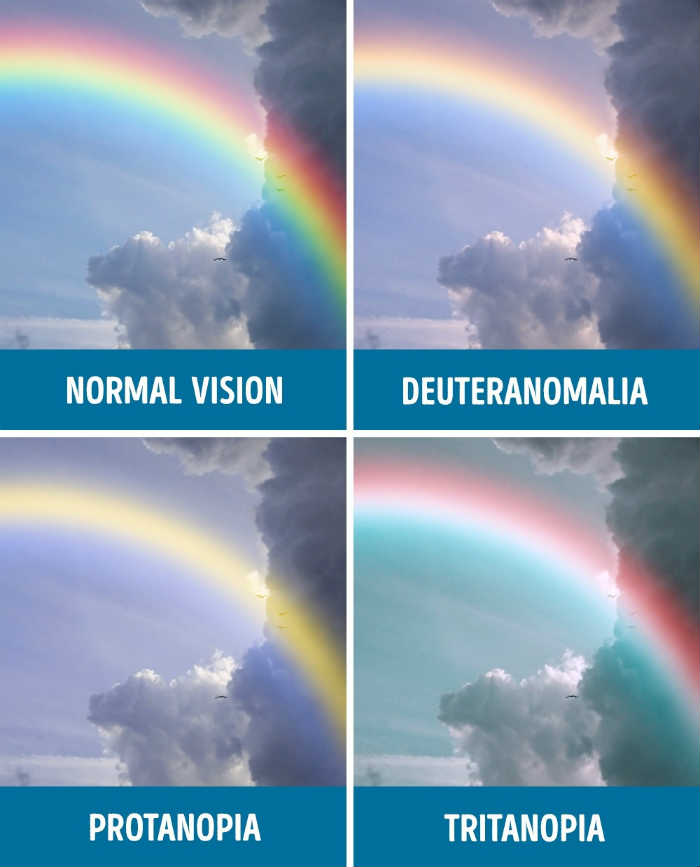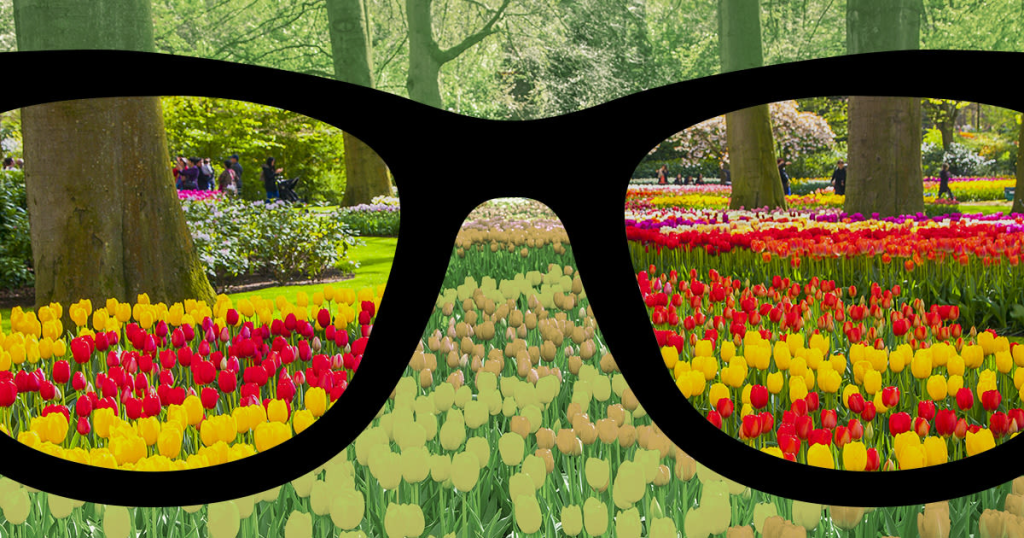Have you ever taken a color vision test? These tests help determine whether you have a color vision deficiency, commonly known as color blindness. What’s surprising is that many people live their lives without knowing they have this condition until they encounter real-world situations like interpreting traffic lights. If you struggle to tell certain colors apart, you might be part of the 8% of men and 0.5% of women who have color vision deficiency.

But did you know there are different types of color blindness? Most people who have difficulty with color perception either confuse red and green or blue and yellow. So, can you read the words in this article? Only those with perfect color vision can clearly see all of them. Let’s explore this phenomenon and discover the different types of color blindness.
The Truth About Color Blindness
Many people assume that color blindness means seeing the world in black and white, but that’s not entirely true. While total color blindness exists, it’s extremely rare. What most people experience is a color vision deficiency, which affects how they see specific colors. For example, someone might struggle to distinguish between reds and greens or between blues and yellows.
True color blindness, known as monochromacy, affects only 0.00003% of the population and involves seeing the world in shades of gray. But most people with color blindness have what’s called dichromacy, where they lack one of the three types of cone cells responsible for detecting colors.
Types of Color Blindness
There are four main types of color blindness, each affecting different parts of the color spectrum:
1. Deuteranomaly: The Most Common Form of Color Blindness
Deuteranomaly is the most common type of color blindness, affecting about 4.63% of men. People with this condition perceive reds and greens as faded or washed out. While they can still see these colors, they lack the vibrancy that people with normal color vision experience. The red-green confusion is particularly tricky in everyday situations, such as identifying ripe fruits or reading color-coded maps.
2. Protanopia: A Less Common Red-Green Deficiency
Protanopia affects 1% of men and is another form of red-green color blindness. In this case, reds appear much darker, and individuals often confuse them with shades of brown or green. Unlike deuteranomaly, protanopia causes reds to lack brightness entirely, making them harder to distinguish from other colors. Interestingly, other parts of the color spectrum, such as yellows and blues, remain unaffected.
3. Tritanopia: Blue-Yellow Color Blindness

Tritanopia is much rarer than red-green color blindness and affects both men and women equally. Individuals with tritanopia confuse blue and yellow, seeing the world in shades of pink and green instead. This form of color blindness is much less common, but it can cause significant challenges in distinguishing between cool tones like blue and warm tones like yellow and orange.
4. Total Color Blindness: Seeing the World in Black and White
Monochromacy, or total color blindness, is the rarest form of color blindness, affecting only 0.00003% of the population. People with this condition see everything in shades of gray because their cone cells do not function at all. Although this form of color blindness is rare, it highlights the incredible variety in how people experience the world visually.
Can You Read These Words? The Color Vision Test
If you have perfect color vision, you should be able to read the following words without hesitation. Let’s see how well your eyes perceive the colors:
- TREE (Blue word)
- EAT (Green word)
- BOOT (Purple word)
- SWEET (Pink word)
- PARK (Blue word)
- LOVE (Orange word)
- HAT (Purple word)
- BEAD (Red word)
If you struggled to see some of these words, you may have a form of color vision deficiency. This test illustrates how different types of color blindness can affect your perception of various shades.
Understanding the Science Behind Color Vision

Color vision is all about the cone cells in your eyes. There are three types of cones, each sensitive to different wavelengths of light: one for red, one for green, and one for blue. People with normal color vision, known as trichromats, have all three types of cones working properly, allowing them to see the full spectrum of colors.
However, individuals with color blindness are missing or have malfunctioning cone cells. Depending on which cones are affected, this deficiency alters their ability to distinguish between certain colors. For example, someone missing their red-detecting cones will struggle with reds and greens, while someone missing their blue-detecting cones will confuse blue and yellow.
The Impact of Color Blindness on Daily Life
For most people, color blindness isn’t a major issue. However, it can create challenges in certain situations. Here are a few everyday scenarios where color vision deficiency can have an impact:
1. Interpreting Traffic Signals
One of the most common issues faced by people with red-green color blindness is difficulty distinguishing between the red and green traffic lights. Since both colors can appear similar, individuals often rely on the position of the lights rather than the color itself to know when to stop or go.
2. Reading Maps and Charts
Maps and charts often use color coding to distinguish different regions or data points. For someone with color blindness, red, green, and blue areas can become indistinguishable, making it challenging to interpret information. This is particularly difficult in professions like geography, engineering, and data analysis, where accurate color perception is crucial.
3. Recognizing Ripe Fruits
Knowing when fruits like strawberries, apples, or tomatoes are ripe can be tricky for someone with color blindness. Since these fruits turn red as they ripen, individuals with red-green color blindness may struggle to tell when they’re ready to eat. In such cases, they often rely on texture or contextual clues, like the smell or feel of the fruit, to determine ripeness.
Living with Color Blindness: Strategies and Solutions

While color blindness can’t be cured, there are several ways people with this condition can adapt to everyday life. Here are a few strategies that have proven effective:
1. Using Context Clues
Many people with color blindness learn to rely on context clues to navigate the world around them. For example, even if a traffic light’s color is unclear, its position (red at the top, green at the bottom) helps signal when to stop or go. Similarly, packaging labels, the shape of fruits, or even knowing the typical colors of certain objects can help identify them accurately.
2. Color Blindness Glasses
In recent years, color blindness glasses have gained popularity. These specially designed glasses help enhance color contrast, making it easier for people with color vision deficiencies to distinguish between hues. While not a complete fix, they can greatly improve color perception in certain situations.
3. Digital Apps and Tools
There are also numerous apps and tools available that assist individuals with color blindness. Some apps allow users to point their phone cameras at an object, and the app will identify the color for them. Other software can adjust the color balance on screens, making it easier to differentiate between shades.
Why Awareness Matters
Color blindness may not seem like a major issue to those unaffected, but it’s a significant challenge for millions of people around the world. By raising awareness about the different types of color vision deficiency and the daily challenges faced by those who have it, we can foster more inclusive environments.
For example, designers can create color-blind-friendly materials by using patterns or shapes to distinguish between items instead of relying solely on color. Similarly, schools, workplaces, and public services can offer accommodations to ensure that everyone, regardless of their color perception, can access the information they need.
Conclusion: How Do You See the World?
The way we perceive color is a unique and fascinating aspect of human vision. While most people can see the full spectrum of colors, around 8% of men and 0.5% of women live with some form of color blindness. These individuals may struggle with everyday tasks, but with awareness, tools, and strategies, they can still navigate a colorful world with confidence.
So, did you pass the color vision test? If you could read all the words without difficulty, congratulations—you likely have perfect color vision. If not, you might have one of the four types of color vision deficiency. Either way, understanding how color vision works helps us appreciate the diversity in how we all see the world.


